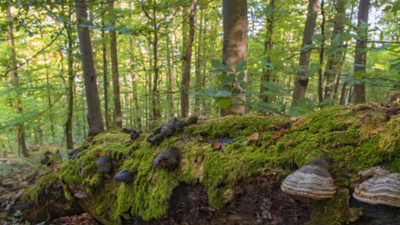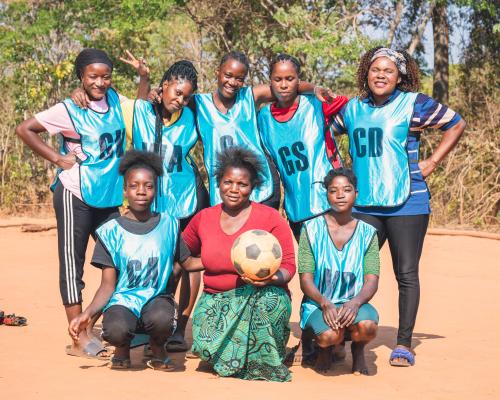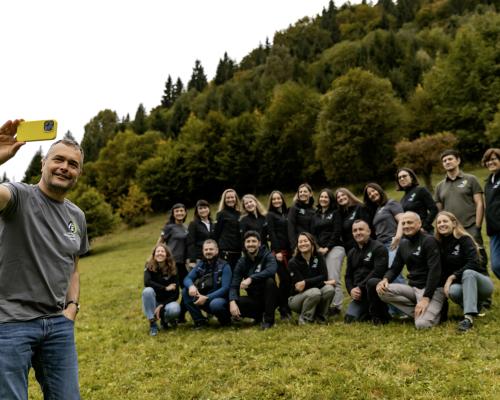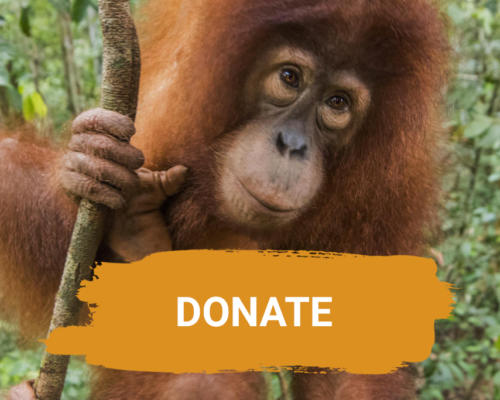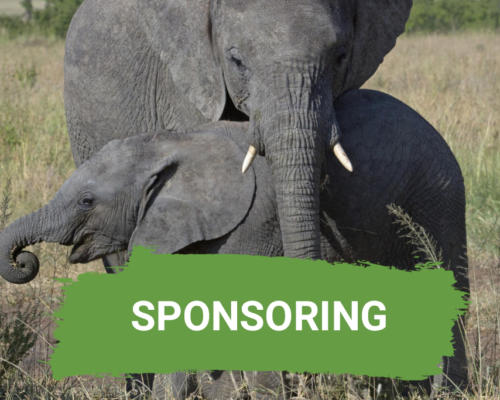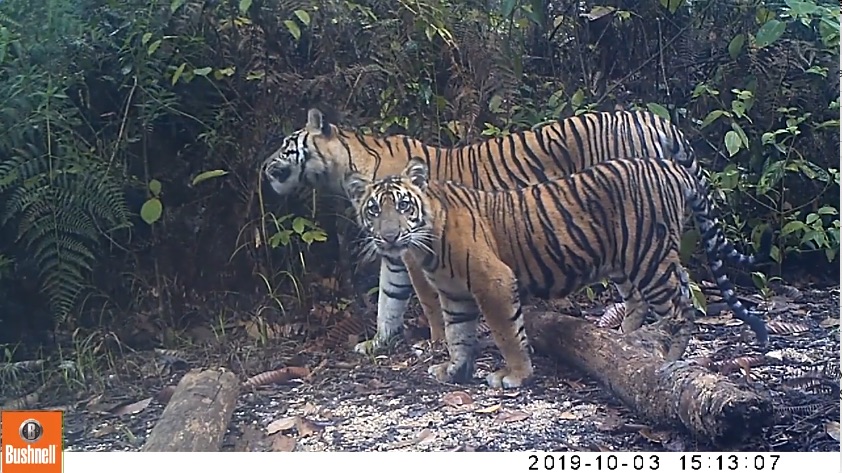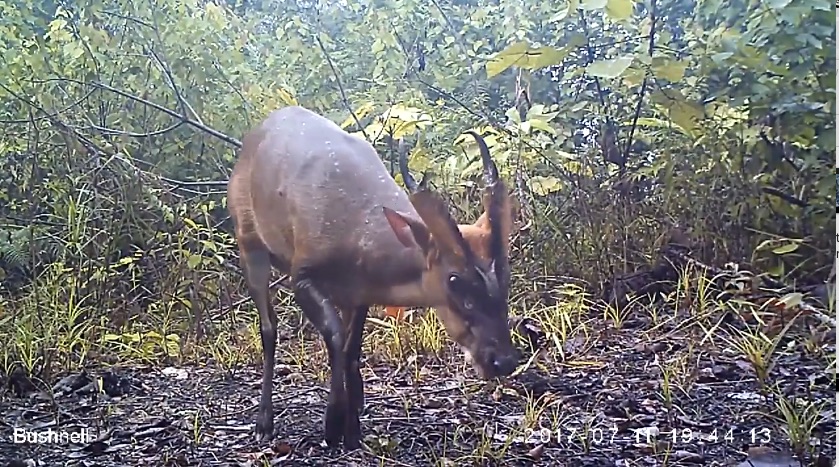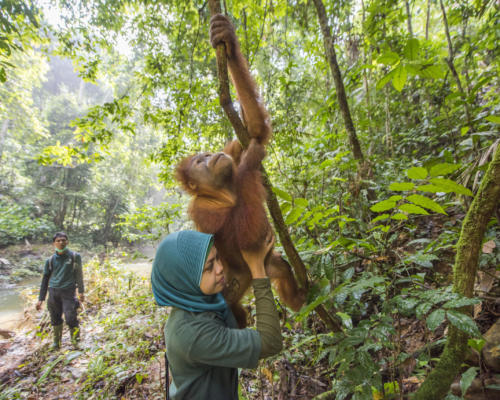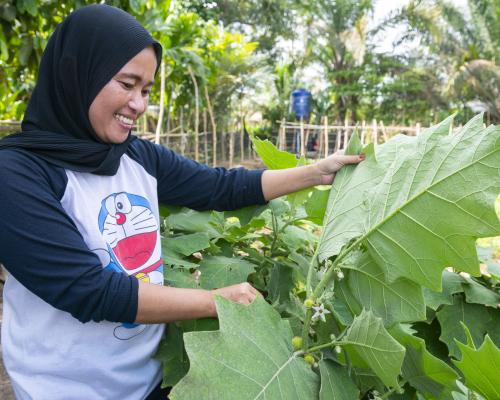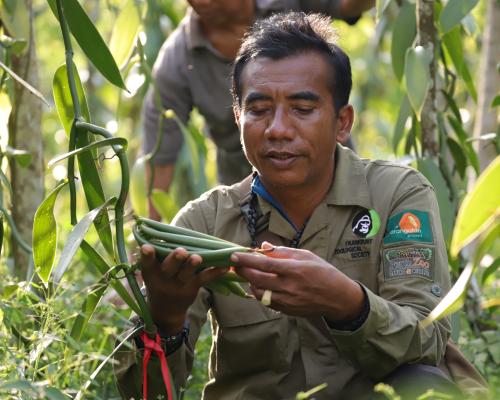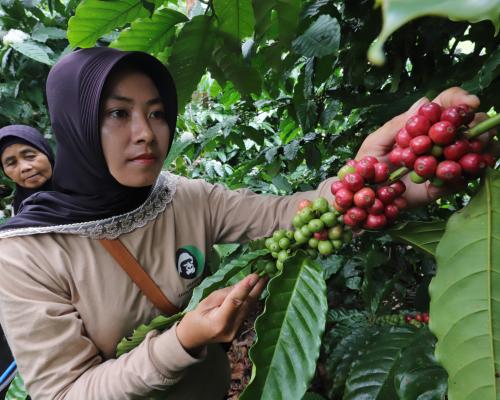Camera traps help conservationists learn a lot about wildlife in FZS project areas. In an interview with FZS staff member Eny, details on how the traps are set up, monitored and the benefit of the results that they provide are shared.

A conservationist’s second set of eyes
- FZS Ecosystem Monitoring Unit (EMU) coordinator Eny Wahyu Lestari leads the ranger patrol and camera trap teams in the Bukit Tiga Puluh landscape, Sumatra, Indonesia
- Eny and her team prefer to use camera traps as opposed to other tools because they can be left in the field for months at a time and which provide a great deal of quality data
- Although accessing the cameras is difficult due to their remote placement, and analysis of the data can take weeks, the results are worth it because the information contributes to our knowledge, shows us the health of the ecosystem, where poaching activities might be taking place, and contributes to educational resources
Camera traps are effective wildlife survey tools. These are not traps that capture animals, rather their function is to take a photo or video of wildlife living in the area being monitored by wildlife conservationists or rangers. There are other tools available on the market, such as scat analysis, line transects, live trapping and release, acoustic surveys and more. But “in many cases, camera traps recorded more findings than any other method, giving more reliable and richer information,” says FZS Ecosystem Monitoring Unit (EMU) coordinator Eny Wahyu Lestari who is based in FZS supported project Bukit Tiga Puluh landscape conservation program in Sumatra, Indonesia.
Eny has been working with camera traps in Bukit Tiga Puluh since 2017, leading a team of 10 rangers since 2019. Below she shares how and why camera traps are being used in this project area.
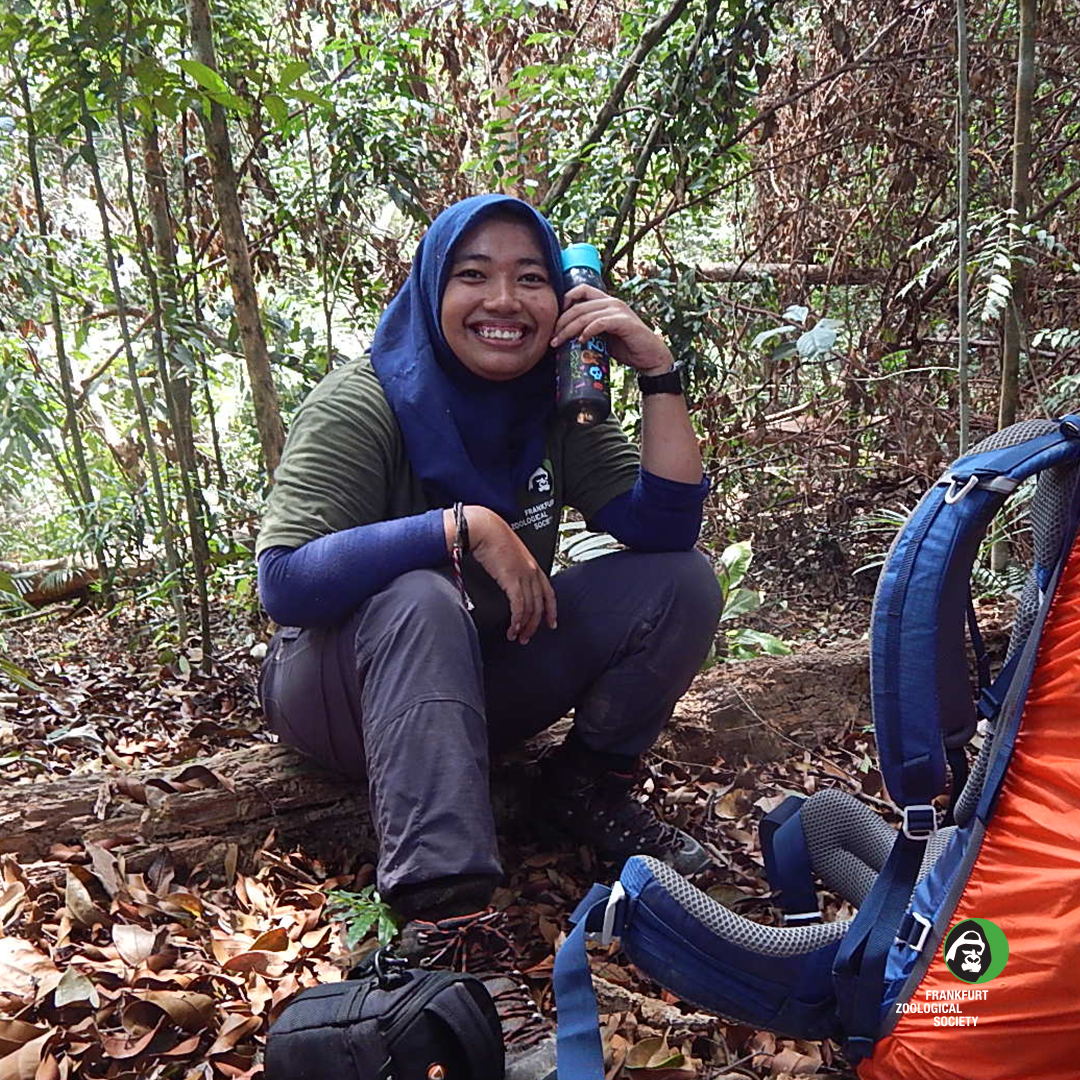
The Bukit Tiga Puluh landscape is nearly 265,000 soccer fields large. How does your team observe the species living in this huge area?
There are several solutions that can be used by conservationists to understand what animals live in the area, including scat analysis, something called line transects where you walk along an invisible line and record all animals you see and more. But we prefer to use camera traps because with line transects for example, you’re capturing data about a few species since wildlife is sometimes shy and hides from people when they sense our presence.
Also, this type of survey is only possible during the day, which means nocturnal wildlife is missed out completely. These are problems that camera traps, which are essentially a specialized camera strapped to a tree or post, surpass because not only is this a non-intrusive method that can be left in the field to automatically turn on when the thermal or motion sensor is activated but they can also work at night, using invisible infrared flashlights.
The specific camera we have been using for our camera trap research since 2013 is the Bushnell Trophy trail camera. We use these ones in particular because of the great resolution that gives us nice clear pictures of the animals, the fact that they have passive infrared sensors as well as fast trigger speeds and the wide lens covers a large area.
Currently, we have around 40 cameras permanently deployed in the buffer zone of the National Park; this gives my team enough footage within a year to get a good idea of the animals that live in this area. Our plan is to start setting up camera traps within the National Park as of March 2021.
These devices can be left alone in the field theoretically for up to four months without the need for battery or storage card change. But we check them every 2-3 months because if there is a lot of animal activity in one area then that camera will run out of battery and storage space faster and we don’t want that to happen.
Checking the cameras is very straightforward, equivalent to checking a normal camera. But getting to them requires a great deal of physical endurance. Essentially our team needs to walk up to 100 km through very dense and hilly rainforest (Bukit Tiga Puluh translates to 30 hills in local language). Also, sometimes our team walks in harsh weather conditions to get to the cameras, which are placed where the animals are, so in really rural places. Not only that but we also have to carry all our heavy gear and enough supplies to last us several weeks. It can be tough.
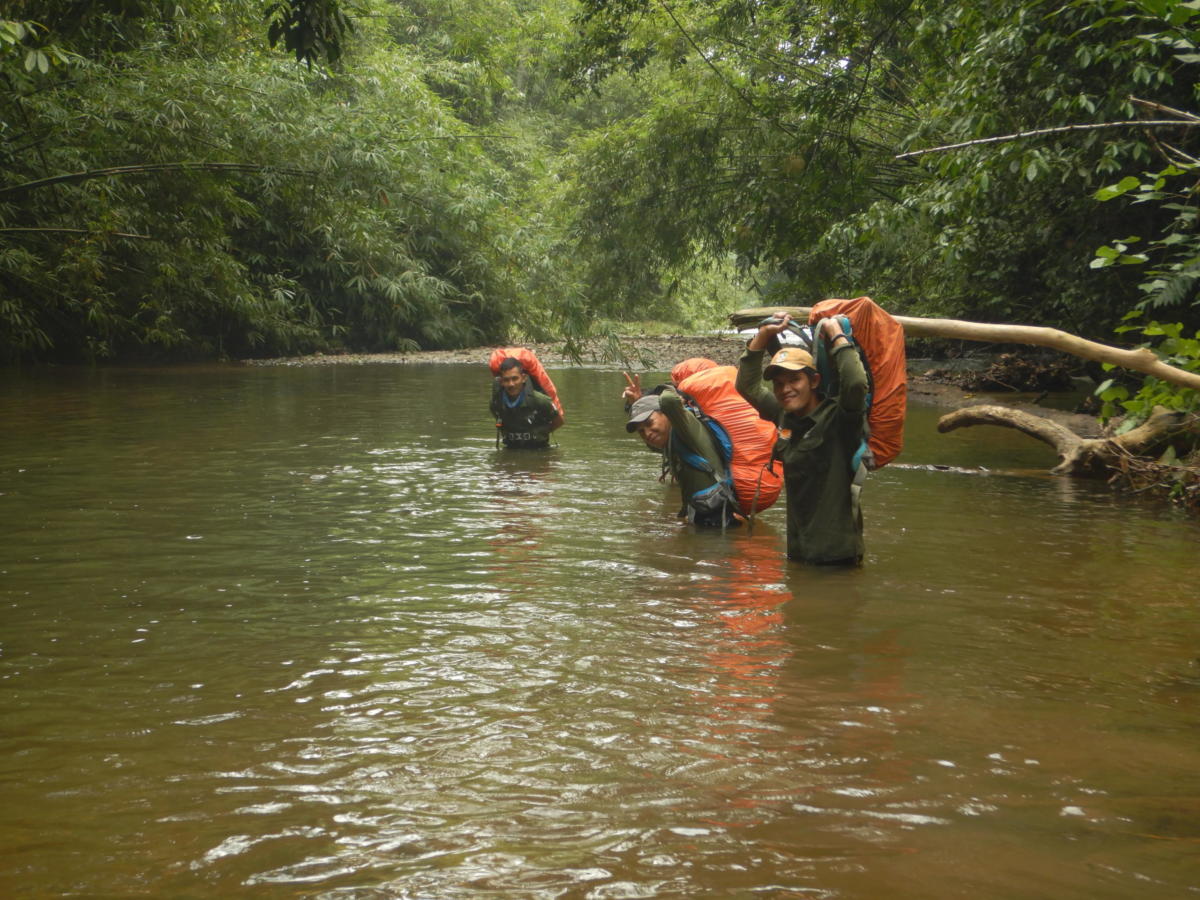
These devices can be left alone in the field theoretically for up to four months without the need for battery or storage card change. But we check them every 2-3 months because if there is a lot of animal activity in one area then that camera will run out of battery and storage space faster and we don’t want that to happen.
Checking the cameras is very straightforward, equivalent to checking a normal camera. But getting to them requires a great deal of physical endurance. Essentially our team needs to walk up to 100 km through a very dense and hilly rainforest (Bukit Tiga Puluh translates to 30 hills in local language). Also, sometimes our team walks in harsh weather conditions to get to the cameras, which are placed where the animals are, so in really rural places. Not only that but we also have to carry all our heavy gear and enough supplies to last us several weeks. It can be tough.
The best places are where animals are located of course. To find these hotspots we look for animal trails and follow them. Then, in clearings we set up cameras by strapping them to trees and sometimes we will also place the cameras inside metal cages, we do this especially if we’re monitoring curious elephants who like to play with the devices.
For Sumatran tigers, an animal we often monitor, we put up two cameras across from each other so that we can get a good look at the stipes on the animal because this is its unique identifying feature. Since 2013, I am happy to report, we have seen 34 adult tigers and five young tigers on camera footage. One of these tigers was an injured female who we saw a few times over the years. She had problems with her leg and we thought she wouldn’t survive, but she did! The cameras proved it!
Analyzing data from each of the cameras is time-consuming. We have to identify the animals from the camera trap media one by one, carefully identifying between 26-34 different species. The amount of time needed though will depend on how many images and videos were captured by the cameras, so how many animals were present in that area, how easy it is to identify the animals in the footage, and the types of settings that were used. This variation in what we receive from the camera traps means it can take anywhere from a week to a month’s time to identify the animals, take notes on the behavior they exhibit, put their right tags on the photos and add them to our database of camera trap media.
Our team’s ability to identify individual animals without needing to refer to field guide books on a frequent basis is also a factor in how long the process takes. Currently, we are lucky because most of the people in my team have more than 5 years of experience with identifying wildlife in the area and using camera traps, so they are pretty fast at identifying individual animals. Also, I have trained them in wildlife identification and sometimes when we have time, I ask them to identify the animal on a random wildlife picture. Often, they are able to easily answer it! This makes me very proud.
Is the amount of time invested into setting up, checking up, and processing media from the cameras worth it?
Yes, definitely! In comparison to other tools, this one gives the clearest image of the area we are monitoring. It’s not a perfect tool in that it needs a lot of maintenance and analyzing the media does take a lot of time, and the cameras are sometimes at risk of being destroyed by wildlife and sometimes vandalism happens. But on the whole, the photos and videos we receive from the cameras have been contributing a great deal to our knowledge of the wildlife in the area, the distribution of wildlife in the place where the camera was set up, the behaviors the animals exhibit, and details about threats to the animals and the health of the ecosystem.
For example, several years ago we recorded some wild animals who were injured or had physical deformities affecting their limbs, clearly caused by snares that were being set up nearby by poachers. The animals affected included wild boars, honey bears, Sumatran tigers, and many more, it was sad to see. Based on these findings we were able to intensify our patrols in those areas and pay even more attention to finding and removing snares.
In addition, the images and videos have helped us create a book about the wildlife in Bukit Tiga Puluh. This book is available in English and the local language so it can be accessed by politicians, local community members, and anyone else who wants to be further educated about the wildlife on their doorstep. Not only that but some of the footage taken from camera traps over the past few years in this region are also now available on the FZS YouTube channel.
FZS uses camera traps in other project areas around the world. The benefit and value of using these devices is echoed by other camera trap specialists such as FZS employed PhD student working in the Chernobyl Exclusion Zone in Ukraine, Adam Smith, who states that “camera traps are great because they provide a real, concrete piece of evidence. No one can deny if you have a bear or a lynx on a camera trap. This helps make evidence-based decisions, something that is often lacking in this kind of research”.
In the next part of this series, examples of how camera traps benefited FZS conservation efforts in FZS supported projects in Europe will be shared, so stay tuned!
Images in header taken by (1) Daniel Rosengren (2 & 3) by FZS Indonesia camera trap team.


